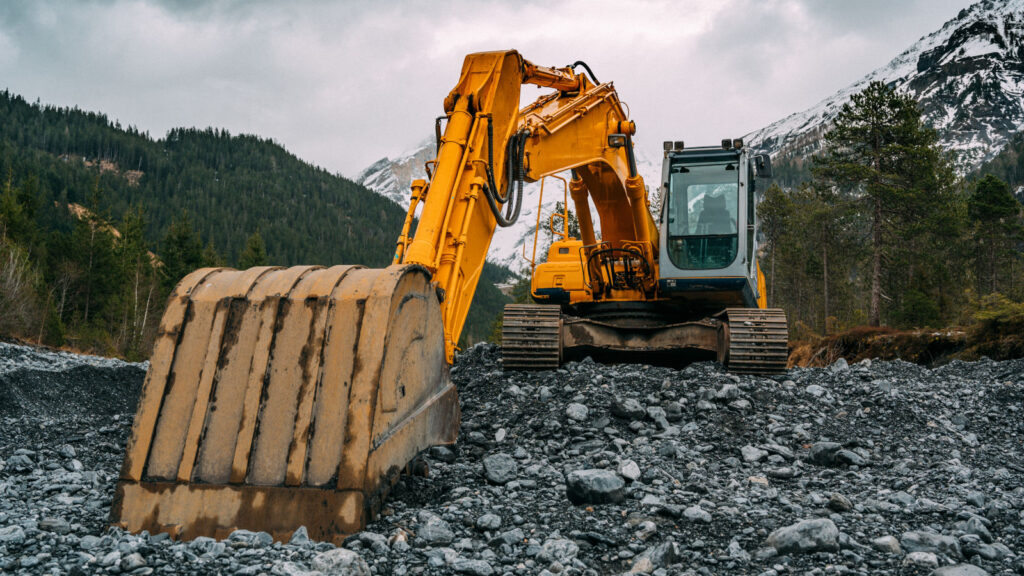
There is a non-negligible risk that Sweden will face a shortage of cement, with large economic, environmental, and social consequences if we do.
What is happening with Swedish cement production now is a cautionary tale and a reminder that something that is taken for granted could suddenly become scarce. Even though this situation is far from ideal it should be seen as an opportunity to develop long-term sustainable solutions to reduce our climate impact and at the same time make sure that we cover our needs for construction.
Important lessons from this episode are, 1) be aware of a reliance on one large supplier but also consider domestic production from a geopolitical standpoint, 2) weigh different interests against each other when considering permits e.g., local versus global environmental impact, or environmental impact versus societal needs, 3) remember that there can be unintended consequences when you disrupt a value chain (e.g., LKAB needs cement for HYBRIT to be able to produce fossil-free steel).
A combination of a long approval processes, a potentially irrevocable impact on groundwater supplies, a large domestic need for cement and the legality of a temporary law has led to a turbulent second half of 2021 in Sweden (and that is aside from covid and the political drama concerning the formation of our new government).
The issue of sufficient supply of cement is pressing since Sweden has a great need for cement for industrial purposes, infrastructure investments, house construction and climate change work (e.g. wind power expansion or to make fossil-free steel production possible). The potential for importing cement from other EU countries is limited and imports from e.g. Algeria, Turkey and China would lead to an increased environmental impact and higher costs via extended transports and it would risk moving any environmental problems abroad. Even with imports the use of another limestone for cement as a binder in concrete requires adjusted recipes and testing based on the area of use of the concrete, before it can be used. The actual preparatory work with the development of a new cement, before type testing becomes relevant, can take several years. It is also very difficult to replace anything other than a small amount of cement with replacement materials such as slag, fly ash or bottom ash in the short term.
Uncertainty about what the supply of cement in Sweden will look like next year could very well have a negative effect on the number of buildings starts for both non-residential and residential buildings, as well as for infrastructure projects, despite a continued high demand for construction.
BackgroundCementa is part of the German-owned Heidelberg Group. Cementa has two active quarries in Sweden, one in Skövde and one in Slite. Approximately 75 percent of the cement used in Sweden each year is produced in Slite, which amounts to about 2.3 million tons of cement annually.
Prologue
2017, December
Cementa applied for a permit for continued and expanded limestone mining and water operations in Slite on Gotland (Sweden).
Act I – A crisis looms
2020
January
The Land and Environment Court at Nacka District Court ruled to grant Cementa the permit they applied for in 2017.
April
The decision to grant the permit was appealed to the Supreme Land and Environmental Court, which granted leave to appeal.
2021
July
The Supreme Land and Environmental Court announced that Cementa’s application for a new permit is rejected. Because the company’s environmental impact statement was deemed to have such shortcomings that it could not “form a basis for a decision on the environmental impact” (caused by continued /expanded operations). Specifically, the assessments of the impact on the groundwater on Gotland was found to be lacking. The decision meant that Cementa now had been forced to cease its lime mining in Slite no later than October 31st 2021.
Cementa appealed the rejection decision to the Supreme Court.
August
The Supreme Court decided not to grant leave to appeal.
The government announced that it aims to introduce a bill for a special and temporary change in the Environmental Code that extends Cementa’s permit for extraction and water operations in Slite for a limited amount of time. To avoid a supply shortage.
Act II – No time to relax
September
The Council on Legislation rejects the government’s proposal for an exception law to allow Cementa to keep mining limestone under their old permit, for a limited amount of time. The council on legislation deemed that the proposal lacks generality, is contrary to the Constitution of Sweden and that it could damage the confidence in the Swedish legal system. However, the Council’s opinion is only advisory.
The government announced that they will send a slightly amended bill to parliament for a vote. Despite the Council on legislation critiques.
Cementa applied to the government for a temporary permit to continue conducting lime mining operations in Slite, Gotland, according to the Environmental Code. In its application, Cementa has also requested that the government decide on exemptions from the requirements for environmental assessment in the Environmental Code.
The threat of a cement shortages with serious consequences for society outweighed any objections and all political parties in parliament voted in favor of the governments bill to grant the temporary amendments to the Environmental Code. The amendments will apply for three months and enables the government to grant a temporary permit for continued mining in a limestone quarry, under certain conditions.
October
The temporary amendments to the law enters into force and applies until January 1st 2022.
November
The government granted Cementa an extended permit, to mine the limestone still left under the previous permit, until the end of December 2022.
Act III – It’s not over till it’s over
December
Urbergsgruppen, an association that works for long-term management of the earth’s natural resources and for reduced extraction of finite raw materials from the earth’s crust, appealed the decision to grant a temporary permit to the Supreme Administrative Court. They also want the court to ask the European Court of Justice for a preliminary ruling and for Cementa’s quarrying to be stopped pending a decision.
The Supreme Administrative Court can decide on so-called inhibition, which would mean the government’s decision on an extended permit may not be applied until the court has decided the case. The court can also request an opinion from the European Court of Justice if it considers that there are European Union legal issues that need to be clarified. Even in such a situation, the Supreme Administrative Court can decide on inhibition.
2022
Both Greenpeace and the Swedish Society for Nature Conservation have the right to appeal at both the national level and the EU level. The cause for appeal is both the temporary law itself (that the council on legislation called unconstitutional) and the government’s temporary permit decision for Cementa. Both groups have stated that they will appeal, and they are preparing their separate cases to be presented in 2022. They have however not indicated that they will call for inhibition.
Epilogue
Even if there is no decision on inhibition the temporary permit for Cementa ends on December 31, 2022. Cementa is now in the process of submitting a new application for a shorter permit of only three years (as they are preparing a parallel application for a longer permit), an application which may well take about a year for the court to rule on. Therefore, we might still find ourselves in a similar situation one year from now.
